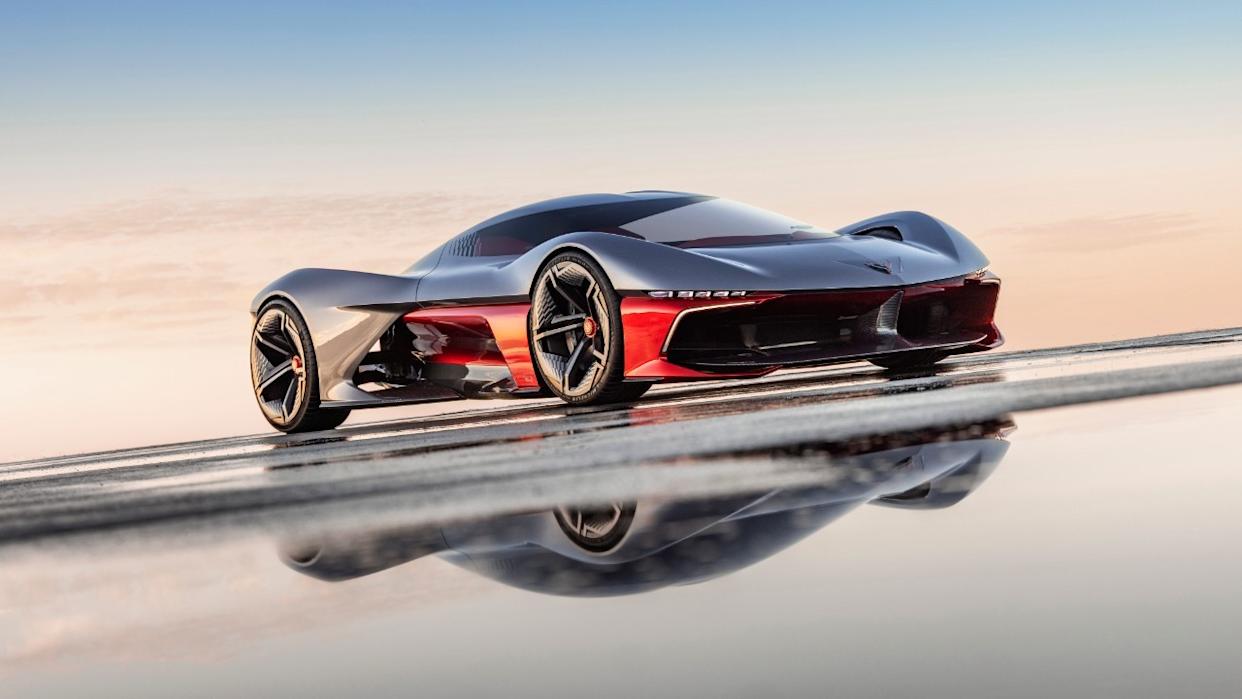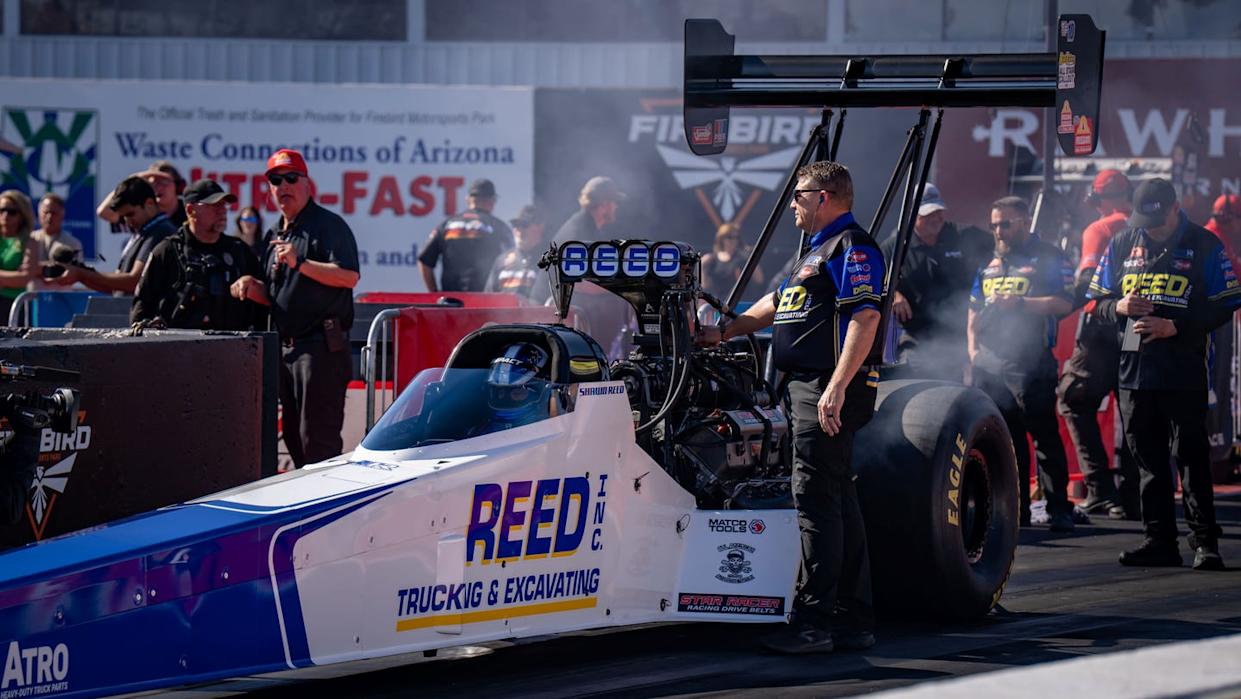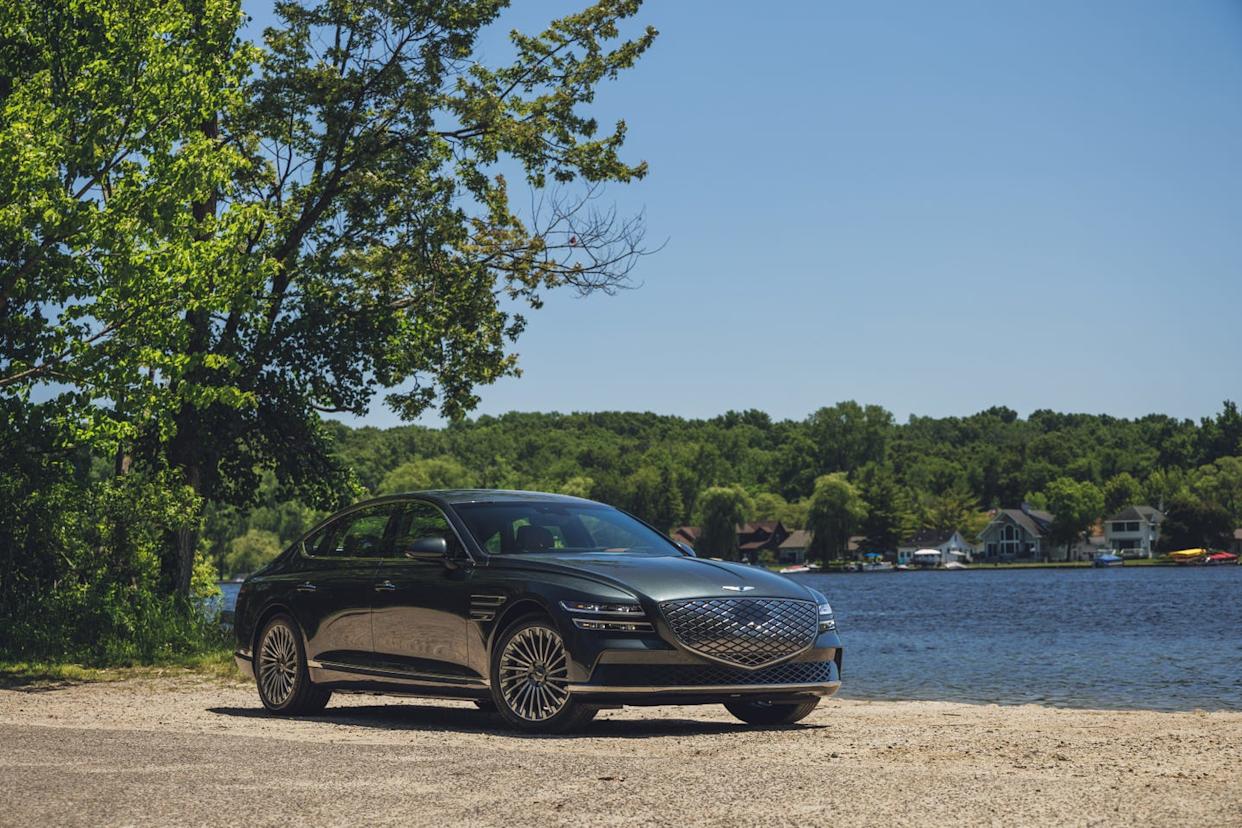
Recognizing that slow, antiquated, polluting, and inefficient gasoline engines have no future in the world of sports cars and racing, GM released its latest Corvette concept as a super-fast, quiet, all-electric beast.
On July 24, 2025, General Motors (GM) revealed the California Corvette Concept, the second of three Corvette design studies slated for 2025. Developed by GM’s Advanced Design studio in Pasadena, this one-of-a-kind electric hypercar pays homage to Corvette’s heritage while channeling a futuristic, Southern California-inspired aesthetic.
This design study is not intended for production, but rather serves as a creative exercise, part of GM’s long tradition of using the Corvette nameplate to explore next-generation design and performance. The California Corvette Concept blends race-inspired cues with bold design innovation. A wide stance, staggered 21-inch front and 22-inch rear wheels, and a narrow, tapered cabin deliver unmistakable Corvette DNA. At the same time, a dramatic single-piece, front-hinged canopy transforms it from a sleek sports coupe into an open-air track car.

“Our Advanced Design teams are dedicated to shaping the future, driving innovation, and exploring what’s possible,” said Bryan Nesbitt, vice president of global design. “The California Corvette concept is another example of forward-thinking design. We invited multiple GM studios to envision Corvette-inspired hypercars — the first of which was revealed by our UK studio in March. The California team has now delivered a complementary study that honors Corvette’s legendary performance, while infusing it with their own distinctive vision.”

Inside, a minimalist, driver-centric cockpit integrates structural elements and performance-focused digital displays. An augmented reality head-up display presents only the most essential driving data, designed for high-speed focus.
“Southern California has been at the heart of automotive and design culture for a century, and GM has had a deep design presence here for nearly 40 years. We wanted to ensure that this concept was developed through that SoCal lens, but with a global and futuristic outlook. Duality of purpose is the basis of this concept’s design strategy,” said Brian Smith, design director, GM Advanced Design Pasadena. “The defining design aspect is the single-piece, front-hinged canopy than enables the entire upper shell to be removed, transforming the concept from an agile, slick sports car to a lightweight, open-air track car.”

The California Corvette was designed on GM’s 148,000-square-foot Pasadena campus, a hub for advanced vehicle development and creativity within GM’s global design network. This bold concept car not only celebrates Corvette’s legacy but also points to the future of electric performance design.
Underneath, a tunneled underbody and lightweight carbon fiber tub form the core structure. It features active aerodynamic elements, including a deployable spoiler and air brake, and is equipped with large staggered wheels, measuring 21 inches in diameter at the front and 22 inches at the rear. The assumed T-shaped prismatic battery pack allows for low seating and improved airflow around and through the chassis.
Key dimensions:
Height: 41.4 in (1,051 mm)
Width: 86 in (2,184 mm)
Length: 182.5 in (4,669 mm)
Wheelbase: 109 in (2,767 mm)
GM’s 148,000-square-foot Pasadena campus is home to 130 staff across creative, fabrication, sculpting, modeling, and operations. The facility plays a key role in GM’s global design network, which spans Detroit, Shanghai, Seoul, the UK, and Los Angeles.

Why Fully Electric Is the Future of Sports Cars
For over a century, sports cars have been synonymous with roaring engines, manual gearboxes, and the visceral thrill of internal combustion. However, as the automotive world rapidly pivots towards electric vehicles, a new generation of high-performance models is emerging: fully electric sports cars that redefine speed, control, and design. And the future has never looked faster.
Instant Torque = Instant Thrill
Electric motors deliver 100% of their torque instantly, which means EV sports cars can launch off the line with mind-bending acceleration. There’s no waiting for turbo lag or revving to find the power band, just pure, immediate thrust. Vehicles like the Rimac Nevera and Lotus Emeya are proving that EVs can outperform even the most exotic supercars in straight-line speed. RimacAutomobili claimed the world’s top EV speed record in 2022.
Unmatched Handling Precision
With batteries mounted low in the chassis, electric sports cars benefit from superior weight distribution and a lower center of gravity. This gives them remarkable agility and cornering stability. Advanced torque vectoring and dual- or quad-motor setups enable precise control at each wheel, unlocking new possibilities in traction and performance.
Design Without Compromise
Without the constraints of a front-mounted engine, exhaust system, or traditional drivetrain, electric sports cars offer designers greater freedom. Sleek profiles, aerodynamic enhancements, and unique proportions are becoming the norm. Concepts like GM’s California Corvette and Polestar’s electric roadster illustrate how form and function are evolving together.
Sustainability Without Sacrificing Speed
Today’s EV sports cars aren’t just fast, they’re cleaner. As governments tighten emissions regulations and cities adopt zero-emission zones, electric drivetrains offer a long-term solution for high-performance driving that does not compromise the environment. Recent reports indicate that brands once defined by the speed of the combustion era, such as Porsche, Ferrari, and Lamborghini, are now pivoting to electric platforms.
However, bad news for Lamborghini emerged this week. News reports suggested that Lamborghini is making a big mistake. Electrek reported that the company’s EV may not be 100% electric.
Axial Flux Motors Revolutionize EV Performance
YASA, now a subsidiary of Mercedes-Benz Group following its 2021 acquisition, is setting the stage for a transformation in electric vehicle (EV) propulsion through its breakthrough axial flux motor technology. Already powering some of the world’s most exclusive performance cars, including models from Ferrari and Lamborghini, YASA’s motors are delivering unmatched power density, compactness, and efficiency. The company’s leaders said this technology may soon be introduced in lower-priced EVs.
The Future Is Already Here
Battery technology, once the Achilles’ heel of electric vehicles, is advancing rapidly. Solid-state batteries, faster charging, and increased range are on the horizon. Meanwhile, automakers are using electric sports cars as testbeds for innovation, blending performance, AI, augmented reality, and over-the-air software updates to keep pushing boundaries.
Electric isn’t the end of the sports car, it’s the evolution. As performance, design, and sustainability converge, the era of the fully electric sports car is shifting from concept to reality. And for driving enthusiasts, that future looks electrifying.
This post originally appeared on EVInfor.net and has been syndicated by Guessing Headlights.
Like our content? Follow us for more. Read More:








Comments